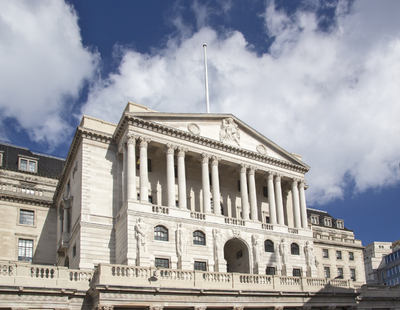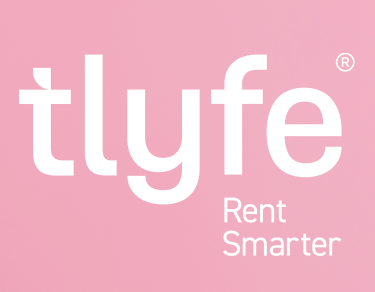
A new Bank of England survey has confirmed a growing outflow of landlords from the private rental sector since 2020.
The Bank’s survey says the “post-pandemic peak in outflows was more notable in London and the South East than other UK regions.”
The verdict from the BoE comes after debate with some critics of the private rental sector claiming there has been no exodus of landlords, while private rental industry experts have pointed to reduced supply and growing demand being behind recent rent rises.
The Bank’s survey is contained in a new paper called The Buy To Let Sector and Financial Stability, which includes a section on whether the sector has seen an exodus of buy to let landlords.
The Bank says there are no available measures that fully capture the size of the PRS, with the main existing measures being Homes listed for sale within three years of being advertised for rent (compiled by Paragon Bank); Implied changes in the BtL mortgage stock (compiled by UK Finance); the number of second homes subject to capital gains tax (HMRC); and letting and estate agents’ record of the share of properties bought and sold by investors, applied to HMRC property transactions to estimate whole market numbers (Hamptons).
The Bank of England says: “Measuring changes in the size of the PRS is challenging. It often requires using different property-level data sets, which can be hard to match. And distinguishing between properties moving between the private rental and owner-occupier markets versus properties changing hands between landlords is important. This is made more difficult when properties have complex or incomplete rental histories.”
So instead it has calculated its own measure of net additions to the stock of rental properties in the PRS, using HM Land Registry property transactions and rental advertisements provided by Zoopla.
And it says: “While imperfect, our measure captures net flows across a significant share of the private rental market … Our measure indicates modest net outflows from the PRS in aggregate, and across UK regions and property sizes.
“Landlord outflows and inflows converged over 2016 to 2020. Outflows appear to have outstripped inflows for at least the past two years, but at a more modest rate than other measures suggest. These trends are broadly consistent across regions and property size. The post-pandemic peak in outflows was more notable in London and the South East than other UK regions.”










%20-%20IMAGE%20Client%20Accounting%20%E2%80%93%20what%20are%20your%20options.jpg)

.png)

%20(002).png)









Join the conversation
Jump to latest comment and add your reply
I wonder why? Perhaps ask Polly Bleat, Generation Rant and Gormless Gove if the RRB has any connection.🤔
Spot on!
I'm sure it's happening.... landlords are either already quitting (fully or partially, depending on number and type of properties) or thinking of it while waiting and seeing, and maybe hoping and praying the government might suddenly do a huge u-turn even though no sign of it and highly unlikely.
There are many reasons why landlords might be slow initially to quit, even if very likely to in the end.... huge exit costs, especially the horribly unfair CGT largely on nothing but years of inflation and a loss of value in the the pounds needed to buy property rather than any genuine (but in reality mythical) "capital gain" in real terms... plus the sheer lack of liquidity of property and hassle of getting it ready to sell then actually selling.... then how to replace the income.... and loss of "investment" that at least tracked inflation ...hence that "capital gain" which is really just not a real-terms loss in capital value - until its stolen from you in tax.
My prediction is that at some point there will be a noticeable and undeniable exodus, and once it starts a lot of people will be full of excuses and explanations but the truth is it will be 100% due to years of government medling, tampering, anti-landlord sentiment and a failure to understand and support our PRS.
One thing most analysts fail to report is that before 2016 the PRS was growing steadily at about 150,000 units a year which it needed to with net migration to provide homes for people, most of whom couldn't afford to buy. Arguably that needed to increase further to keep pace. So a net zero over 2016 -2020 which we have known about for a while should have had alarm bells ringing enough let alone waiting to see if numbers started dropping before concluding we could have a problem, and even now its still only could, not do have. I refer you once again to Monty Pythons dead parrot sketch.
EXCELLENT point @MP.... a reversal of growth to stagnation and general sitting on hands WAS and SHOULD still be a huge red flag.
I still think way too many people dont understand. Even if the PRS has been growing by 200,000 units from 2016 to 2023, that would have been cause for concern with net migration stuck at 600,000+ and even before then its been 3-400k. But 0 growth for 5 years and a reversal of say 250,000 in the last 3, means a gap of about 3.5m required units has been created while most people have been asleep at the wheel. PRS should be about 8 million units by now, instead of closer to 4 million.
Strange though that no politician can see the link between immigration running at 1.5 million for the last 2 years and homelessness
The Government sells 3M state-owned social housing homes for profit and then turns 3M private rental homes into social housing with no profit.
How anyone can possibly state there is not a mass exodus of landlords is either blind, stupid or suffering from a termibal case of wilful ignorance. Councils are going Bust due to the exponential growth in costs of housing homeless who gave been evicted due to landlords selling up.
The government in recent years has made no secret of the fact that it thinks there is too much property in the hands of landlords and policy and dogma is that the number of properties to let should be reduced so that people can buy their own property instead. The instruments of this policy are well known: stringent taxes to inflate the cost of renting and thereby make it financially unappealing, and burdensome legislation to make it much more risky for a reduced reward.
Landlords have to navigate these waters using the tools at their disposal: higher rents to cover higher costs (highest cost applies in a shortage situation, like the electricity market), and very stringent tenant vetting to make sure that there will be no tenants that take advantage of their legal privilege to carry out antisocial behaviour, not pay rent for months, cause damage, refuse to vacate, etc. Also, use of guarantors and large amounts of rent in advance until this becomes illegal.
This can ultimately put landlords in the driving seat as providers of something for which demand exceeds supply. Increasingly, properties will be rented out to people with some kind of connection to the landlord e.g. relatives and friends of past good tenants, who can be counted on to behave in a tenant-like fashion and uphold their end of the (these days) more or less unenforceable contract without question.
Please login to comment